- Django Interview Questions
- Python Array Examples
- Python enum
- Python Enumerate with Example
- Python Flask Tutorial For Beginners
- Python For Beginners - Way To Success
- Python For Data Science Tutorial For Beginners
- Python for loop
- Python GET and POST Requests
- Python IDEs for Python Programmers
- Python Interview Questions
- Python Lists with Examples
- Python Partial Function Using Functools
- Python Print
- How to generate random numbers in python
- Python Regular Expression (RegEx) Cheatsheet
- Python Sleep Method
- Python List Methods
- Python Split Method with Example
- Python String Functions
- Python Tutorial
- Python Variable Types
- Python vs Java
- Python vs SAS vs R
- Python Operators
- Code Introspection in Python
- Comprehensions in Python
- Python Exception Handling
- Defining Functions - Python
- Generators & Iterators in python
- Install Python on Windows and Linux
- Introduction to Python Programming
- Lists concepts in Python
- Loops in Python
- Regular Expression Operations in Python
- Python Serialization
- String Formatting - Python
- R vs Python: Which is better R or Python?
- Six Digit Salary With Python
- Top 20 Python Frameworks List
- Why Learn Python
- Python Substring
- OOPs Interview Questions
- Career Shift To Python : Success Guaranteed
- Face Recognition with Python
- Go vs Python
- Pyspark Interview Questions
- Python Pandas Interview Questions
- OpenCV Interview Questions
- Python Project Ideas
- Flask Interview Questions and Answers
- Array Interview Questions
- What is PyCharm?
- What is Seaborn in Python?
- What is Anaconda Navigator
- Numpy Broadcasting - Detailed Explanation
- Python Data Science Interview Questions
- Genpact Interview Questions
- Python Developer Job Description
- Pandas Projects and Use Cases
- DataFrame Tutorial
- Pyspark DataFrame
The implementation of Java and C++ for the development of software applications sometimes seems to be lengthy and complex. Hence, the developers need a more readable and simple high-level language for the development tasks. Python is a language that resolves this challenge and provides more simplicity for developing software, automation, data analysis and visualization, and many other purposes.
In this article, we will learn about Python, including its features and straightforward installation on Windows and Linux. So, without any delay, let us get started with Python installation.
Table of Contents
- Introduction to Python
- Features of Python
- Prerequisites for Python Installation
- Steps to install Python
- Frequently Asked Questions
Introduction to Python
Python enables us to easily write high-level programs for building software applications. It provides both the Procedural and Object-Oriented Programming approaches for developing the applications. It provides a huge set of libraries and third-party packages for different applications.
It was developed by Guido van Rossum as an open-source language and is now licensed under the PSF License Agreement.
Now, let us see some of the notable features of Python to gain a more clear understanding.
| If you would like to become a Python-certified professional, then visit Mindmajix - A Global online training platform for “Python Training” Course. This course will help you to achieve excellence in this domain. |
Features of Python
- It is an Interpreted Language:
Python is an interpreted language which means that the whole source code is compiled line by line and parallelly executed by the compiler. This is different from compiled languages in which whole source code is first converted to low-level code. Then, the compiler executes the complete low-level code in one go.
- It allows us to develop cross-platform applications:
It is a platform-independent language due to which the code compiled on one machine can be executed on other platforms without changing the source code. This helps us to create cross-platform applications which are developed on one platform and run on different machines.
- It provides multiple programming paradigms:
In Python, we can write code in the form of functions as well as a set of classes and objects. Both the programming approaches are available in Python which can be chosen as per the requirement.
- It is simple and easy to learn:
Python’s syntax is one of the most simple and easy to learn syntax. Also, it has a high readability so that the programmers can quickly learn to write the Python Code.
The above features make Python one of the most popular choices among the developers. Now, let us see what requirements should be fulfilled before configuring the programming environment for Python.
Prerequisites for Python Installation
We will install the latest version of Python which is 3.12.0 for which the following minimum requirements must be fulfilled on your system:
- For Windows System, the operating system should be Windows 7 or later. And, there should be at least 4 GB of available RAM and sufficient hard disk space to install the external libraries.
- For Linux Systems, there should be at least 4 GB RAM and sufficient memory to install Python. Python is available for various distributions of Linux such as Ubuntu, Fedora, and CentOS.
Steps to install Python
- Step 1: Go to the official website https://www.python.org/downloads/ and click on the ‘Download’ button as shown below.
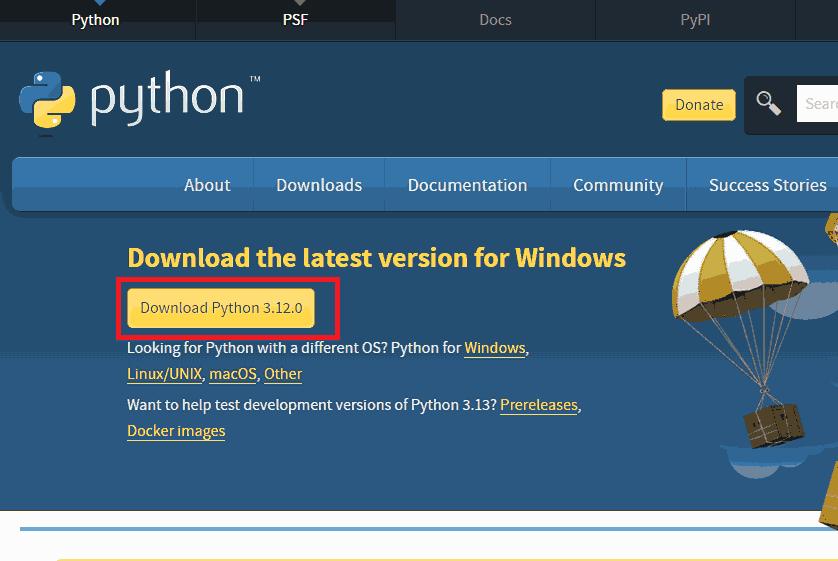
- Step 2: Navigate to the folder where the installer has been downloaded. Double-click on the file to start the installation. The User Account Control may appear as shown below. Click on the ‘Yes’ button and proceed.
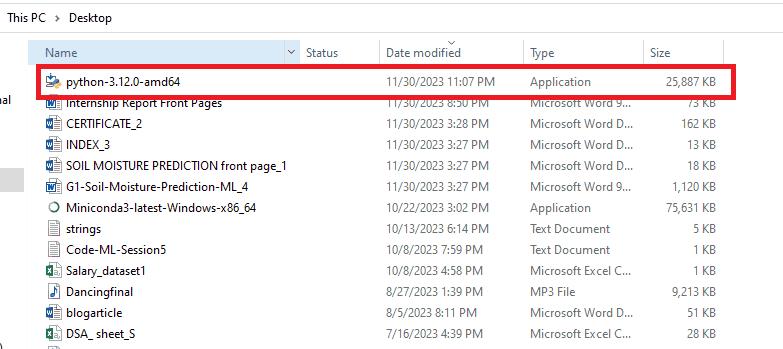
- Step 3: The installation wizard appears as shown below. We recommend you click on the ‘Add python.exe on path’ option so that the python can be added to the PATH variable of your system. This allows us to run Python programs from the command prompt. Choose ‘Customize installation’ as shown below.
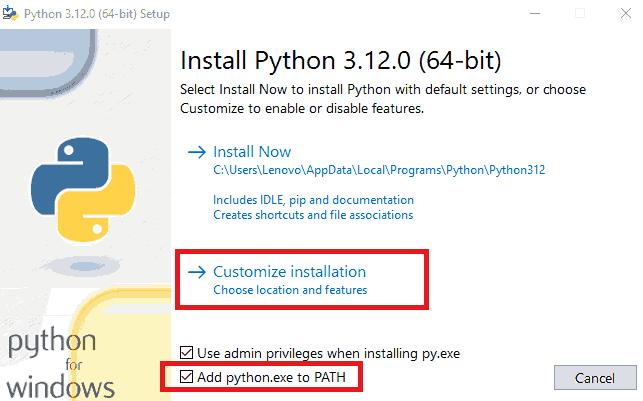
- Step 4: The installer setup shows the default installation options for your Windows System. You can choose the features which you want to install specifically. Then, click the ‘Next’ button.
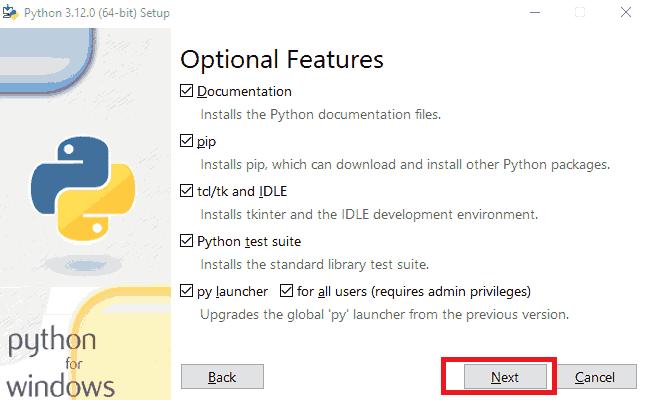
- Step 5: Now, choose the required options and path of the directory where you want to install Python. Then, click on the ‘Install’ button to start the installation.
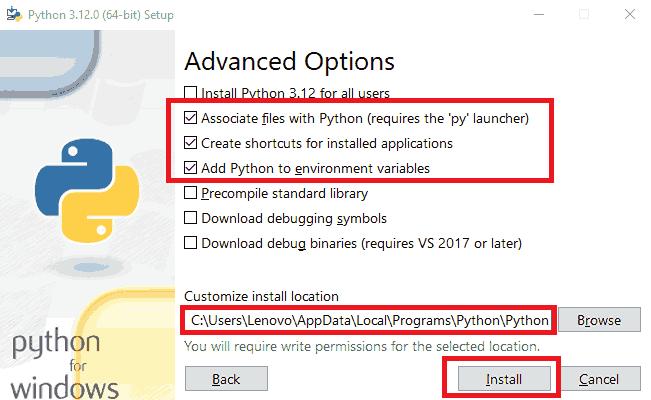
- Step 6: The installation starts as outlined below.Step 7: Once the installation is done, close the setup as demonstrated below.
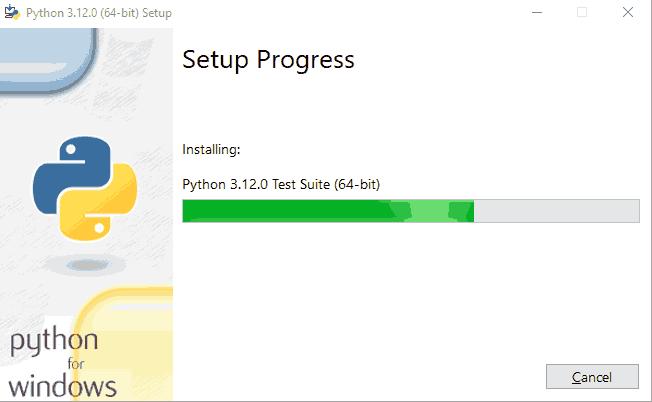
- Step 7: Verify the installation of Python on your Windows System by executing the command ‘python -- version’ on the command prompt as illustrated below:
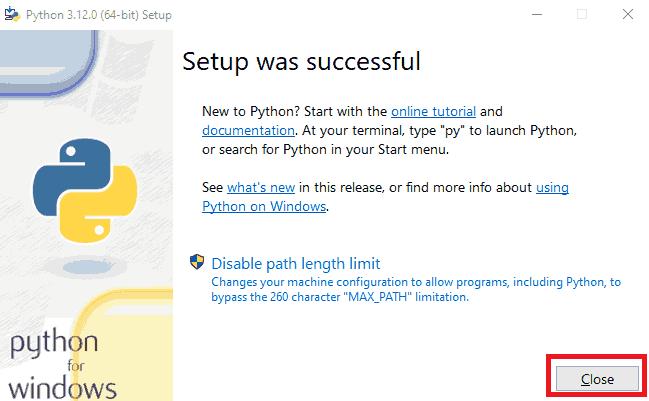
Frequently Asked Questions
1. What is the difference between Python 2. x and 3. x?
Python 2 was the older version of Python whose last release was 2.7.18. After January 2020, no bug fixes are available for Python 2. On the other hand, Python 3 is the latest version which has high community support and is used for the latest projects.
2. How to check if Python is already installed on the Linux Operating System?
Open the terminal on your Linux System and type the command ‘python --version’ to check whether Python is already installed or not.
3. Can I make an open-source contribution to Python?
Yes, you can become a part of Python Developer’s community through open-source contributions. We recommend checking the official developer’s documentation at the website https://devguide.python.org/ for a more detailed guide.
4. Can Python be used for developing standalone desktop applications?
Yes, Python provides various tools such as Tkinter, PyQt, wxPython, etc. for building desktop applications. You can easily choose the tool as per the development requirements.
Conclusion
Python is a very useful programming tool, especially for modern technologies like Artificial Intelligence, Machine Learning, Data Analytics, etc. Due to its open-source feature, it provides an extensive set of libraries for different applications. It also provides the facility of modular development through Procedural and Object-Oriented Programming.
Now you have successfully learned how to install Python on your System. You can now move a step ahead in Python development and use it for different purposes, be it automation, machine learning, or web scraping.
 On-Job Support Service
On-Job Support Service
Online Work Support for your on-job roles.

Our work-support plans provide precise options as per your project tasks. Whether you are a newbie or an experienced professional seeking assistance in completing project tasks, we are here with the following plans to meet your custom needs:
- Pay Per Hour
- Pay Per Week
- Monthly
| Name | Dates | |
|---|---|---|
| Python Training | Dec 16 to Dec 31 | View Details |
| Python Training | Dec 20 to Jan 04 | View Details |
| Python Training | Dec 23 to Jan 07 | View Details |
| Python Training | Dec 27 to Jan 11 | View Details |

Madhuri is a Senior Content Creator at MindMajix. She has written about a range of different topics on various technologies, which include, Splunk, Tensorflow, Selenium, and CEH. She spends most of her time researching on technology, and startups. Connect with her via LinkedIn and Twitter .
















